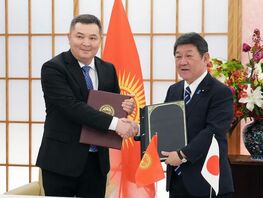The Asian Development Bank (ADB) has approved additional grant financing of $15 million for the project to reconnect Tajikistan’s power grid to the Central Asian Unified Power System. Asiaplus reported.
The additional funds will enable the construction of a 22-kilometer 500-kilovolt power transmission line in northern Tajikistan — between the Sughd substation in Tajikistan and the New Syrdarya substation in Uzbekistan.
This will increase the capacity for export-import of electricity between the countries of the Central Asian power system, including Kazakhstan, Kyrgyzstan, Tajikistan and Uzbekistan, and strengthen the infrastructure to prevent failures.
The project will ensure the readiness of the Tajikistan’s power grid for providing power and frequency regulation services for the smooth integration of renewable energy in the region. In the long term, it will become a key component of the power transmission scheme from the Rogun hydropower station in Tajikistan.
In June 2024, Tajikistan reconnected to the Central Asian power system, which it left in 2009.
The Unified Power System of Central Asia was created during the Soviet Union (in the 1960s) and was managed by the Coordination and Dispatch Center in Tashkent. It made it possible to balance seasonal fluctuations in demand for electricity and water needs during the irrigation period. During the cold season, Tajikistan and Kyrgyzstan accumulated water in reservoirs and received electricity and energy resources (coal and natural gas) from Uzbekistan, Kazakhstan, and Turkmenistan. In the summer, Tajikistan and Kyrgyzstan sent the water accumulated in winter to these countries for irrigation of farmland. In the summer, Tajikistan and Kyrgyzstan also supplied their neighbors with electricity produced in excess.
After the collapse of the USSR, the system existed for several years, then the countries began to leave the ring one after another. Turkmenistan was the first to leave, having decided that it was capable of autonomously providing itself with electricity. The system ceased to exist as such in 2009, but was recreated in 2019. Kazakhstan, Uzbekistan, and Kyrgyzstan joined it.






